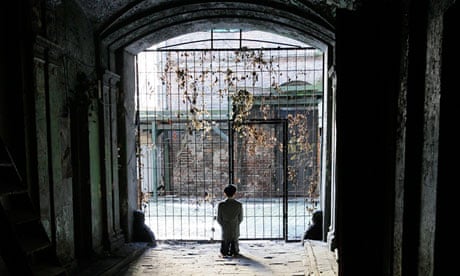A statue of Adolf Hitler praying on his knees has sparked controversy after going on display in the former Warsaw ghetto.
The artwork by Italian artist Maurizio Cattelan, titled Him, has been installed in the Polish capital where thousands of Jews were killed or sent to their deaths by the Nazi regime.
The statue has attracted large numbers of visitors since its installation last month, but some organisations have criticised the decision to erect it in such a sensitive area.
One Jewish advocacy group, the Simon Wiesenthal Center, described the statue's placement as "a senseless provocation which insults the memory of the Nazis' Jewish victims".
"As far as the Jews were concerned, Hitler's only 'prayer' was that they be wiped off the face of the earth," the group's Israel director, Efraim Zuroff, said in a statement.
The Hitler statue is visible from a hole in a wooden gate and viewers can only see the back of the small figure praying in a courtyard.
Cattelan has not made it clear what Hitler is praying for, although organisers of the exhibition in which it features claim the statue is meant to make people reflect on the nature of evil.
Fabio Cavallucci, director of the Centre for Contemporary Art, which oversaw the installation, said: "There is no intention from the side of the artist or the centre to insult Jewish memory.
"It's an artwork that tries to speak about the situation of hidden evil everywhere."
It is estimated that about 300,000 Jews who lived in the ghetto either died from hunger or disease or were sent to their deaths in concentration camps under the Nazi rule.
Poland's chief rabbi, Michael Schudrich, said he was consulted on the installation's placement but did not oppose it because it conveyed a strong moral question by provoking the audience.
He said he was reassured by the organisers who told him the statue did not aim to rehabilitate Hitler but instead show that evil can present itself in the guise of a "sweet praying child".
"I felt there could be educational value to it," Schudrich added.
